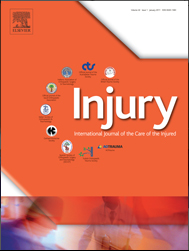
Trauma
Similar outcome using intramedullary nailing or plate fixation for distal radius fractures
This report has been verified
by one or more authors of the
original publication.
Injury. 2014 Jan;45 Suppl 1:S3-8. doi: 10.1016/j.injury.2013.10.045. Epub 2013 Nov 4
152 patients with extra-articular distal radius fractures were randomized to have their fracture fixated using either an intramedullary nail, or a volar plate fixation technique. The purpose of this study was to compare the two methods with respect to functional and radiological outcomes. Results at the 2-year follow-up assessment indicated that patients in both groups exhibited similar pain, function, ulnar variance and volar tilt, and fracture union rates of 100%. Both treatment methods also appeared to be safe, as the incidence of complications was relatively low in both groups. There was a tendency for intramedullary nail fixation to yield less soft-tissue-related complications; however, there was a risk for articular surface screw penetration in this group.
Unlock the full article
Get unlimited access to OrthoEvidence with a free trial
Start TrialCritical appraisals of the latest, high-impact randomized controlled trials and systematic reviews in orthopaedics
Access to OrthoEvidence podcast content, including collaborations with the Journal of Bone and Joint Surgery, interviews with internationally recognized surgeons, and roundtable discussions on orthopaedic news and topics
Subscription to The Pulse, a twice-weekly evidence-based newsletter designed to help you make better clinical decisions
Exclusive access to original content articles, including in-house systematic reviews, and articles on health research methods and hot orthopaedic topics
Or continue reading this full article
Register Now

Subscribe to "The Pulse"
Evidence-Based Orthopaedics direct to your inbox.





































